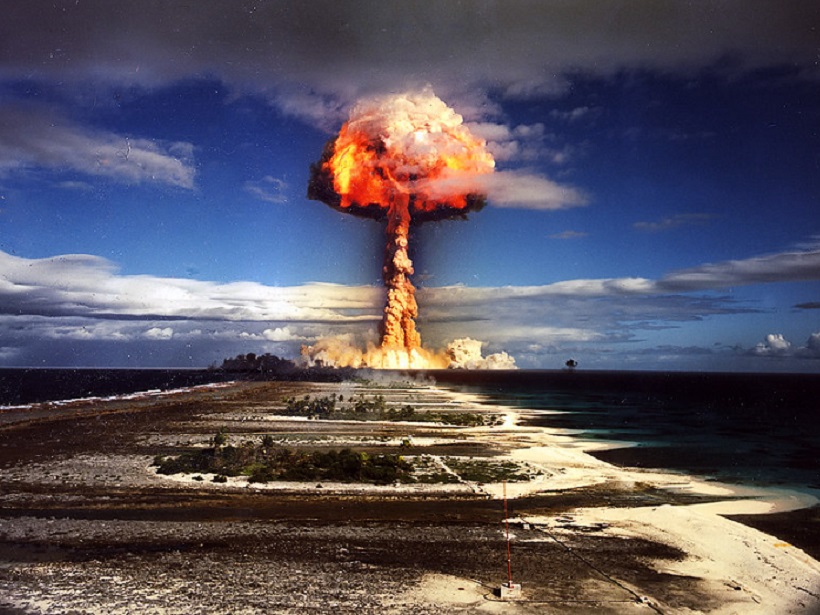A variety of explosive events occur at or below the Earth’s surface, including those from natural sources such as volcanic eruptions, earthquakes, tsunamis, and manmade sources such as nuclear tests, mining activity, industrial explosions, and rocket launches. These so-called “impulsive events” can be detected using a range of methods. A recent paper in Reviews of Geophysics describes the methods that have traditionally been used and explores how ionospheric sensing may be a complementary methodology. Here, the authors of the paper give an overview of these various methods and suggest where further research is needed.
What are the different methods by which impulsive events at or below the Earth’s surface have been detected and measured?
Scientific research in this area has historically been linked to the detection and monitoring of nuclear activities. The Comprehensive Test Ban Treaty (CTBT) has approved four methodologies for monitoring uncontrolled nuclear chain reactions: seismic, infrasonic, hydroacoustic and radionuclide.
Another means of detecting explosive events is ionospheric monitoring. All impulse events create atmospheric gravity, shock and acoustic waves. Atmospheric waves travel into the ionosphere, generating “Traveling Ionospheric Disturbances” (TIDs). These can be detected directly from High Frequency (HF) sounders, and indirectly from Global Navigation Satellite System (GNSS) signals, and radio telescopes tuned to galactic radio sources.

What different insights does ionospheric sensing offer as compared to the other methods?
The earliest above-ground nuclear tests in the 1950s caused ionospheric perturbations that were detected thousands of kilometers from the test sites; they were even detected in the opposite hemisphere. Because the response in the ionosphere can be geographically widespread, remote sensing of an event at considerable distances is possible.
Currently, there is near-global distribution of GNSS receivers enabling detection of TIDs using GNSS transmissions over hundreds to thousands of kilometers, depending on the size of the explosive event, removing the need for detectors close to the explosion site. With thousands of GNSS stations in the world continuously recording GNSS radio signals containing ionospheric information, monitoring is ongoing, and most of the data are readily available to the general public.
Ionospheric detection provides a way to independently confirm impulsive events measured by existing CTBT monitoring technologies. For example, seismic detection produces a high rate of false positives due to earthquakes, mining activities, and industrial explosions.
How does the method of Total Electron Content analysis work?
“Total Electron Content analysis” is one method of ionospheric monitoring. GNSS receivers deployed on the ground receive UHF radio signals from GNSS transmitters in space that contain total electron content (TEC) information along the ray path. TEC is the integrated electron density between transmitter and receiver. If waves are present along the path from transmitter to receiver, there are perturbations in the measured TEC. In order to analyze the waves in electron density, TEC is detrended to reveal the waves.
What are some examples where this method has been successful?
Volcanic eruptions, earthquakes, tsunamis, above and below-ground explosions, and rocket launches have all been detected using detrended TEC data. For example, the method was applied successfully for the Korean Underground Nuclear Explosions in 2006 and 2009. Ground stations in South Korea, Japan, China and Russia were used for analysis of TIDs generated by the North Korean tests.
What are some of the unresolved questions where additional research, data or modeling is needed?
In modeling the ionospheric response, a largely unknown factor are winds that affect the atmospheric waves between the earth’s surface and the ionosphere. At best, climatological models provide average winds to the physics-based models.
Data collection could be enhanced with additional receivers. High-frequency (HF) sounding techniques can make use of Transmitters of Opportunity (ToO) to detect ionospheric disturbances, while high- and medium-frequency (MF) systems can make use of such transmitters to characterize disturbances. A relatively low-cost network of HF/MF receivers could be fielded to sound the bottomside ionosphere, supplementing GNSS receivers.
The primary challenge in terms of methodology is correct attribution. Traveling Ionospheric Disturbances from many sources, both natural and manmade, are a constant background in the ionosphere. Identification and analysis of the original impulse remains an outstanding issue for application of the method. A number of analysis techniques have been tried, from comparisons of the propagation speeds and wave frequencies, to wavelet decomposition and cross-correlation, to distinguish between various sources of TIDs.
Furthermore, techniques to distinguish low-amplitude signals against a high background, with signal-to-noise ratios around unity, need to be developed. A limited number of applications of physics-based modeling have been carried out. This could be extended to study the perturbations generated by different sources, in order to determine wave characteristics – spectral frequencies, amplitudes, propagation direction and velocity – for comparison with data.
Finally, there has been no systematic approach to the classification of observed ionospheric responses to various generators of TIDs. A comprehensive study of responses as a function of size of initial impulse, distance in the horizontal and vertical directions from the source, and identification of wave characteristics corresponding to the different sources, needs to be carried out.
—Cheryl Y. Huang (email: [email protected]), Air Force Research Laboratory, New Mexico; Joseph F. Helmboldt, Naval Research Laboratory, Washington, D.C.; Jihye Park, Oregon State University; and Todd R. Pedersen and Raymond J. Willeman, Air Force Research Laboratory, New Mexico
Citation:
Huang, C. Y., J. F. Helmboldt, J. Park, T. R. Pedersen, and R. J. Willeman (2019), Measuring explosive events on earth from the ionosphere, Eos, 100, https://doi.org/10.1029/2019EO120143. Published on 12 April 2019.
Text © 2019. The authors. CC BY-NC-ND 3.0
Except where otherwise noted, images are subject to copyright. Any reuse without express permission from the copyright owner is prohibited.

